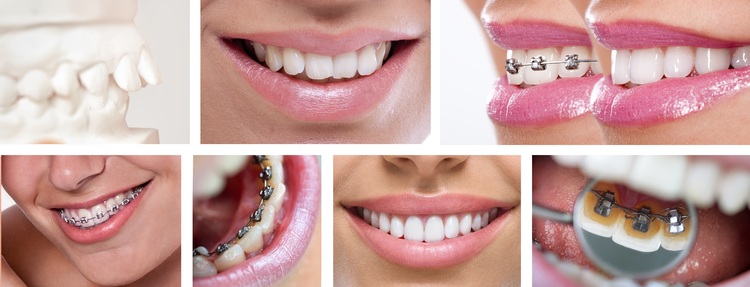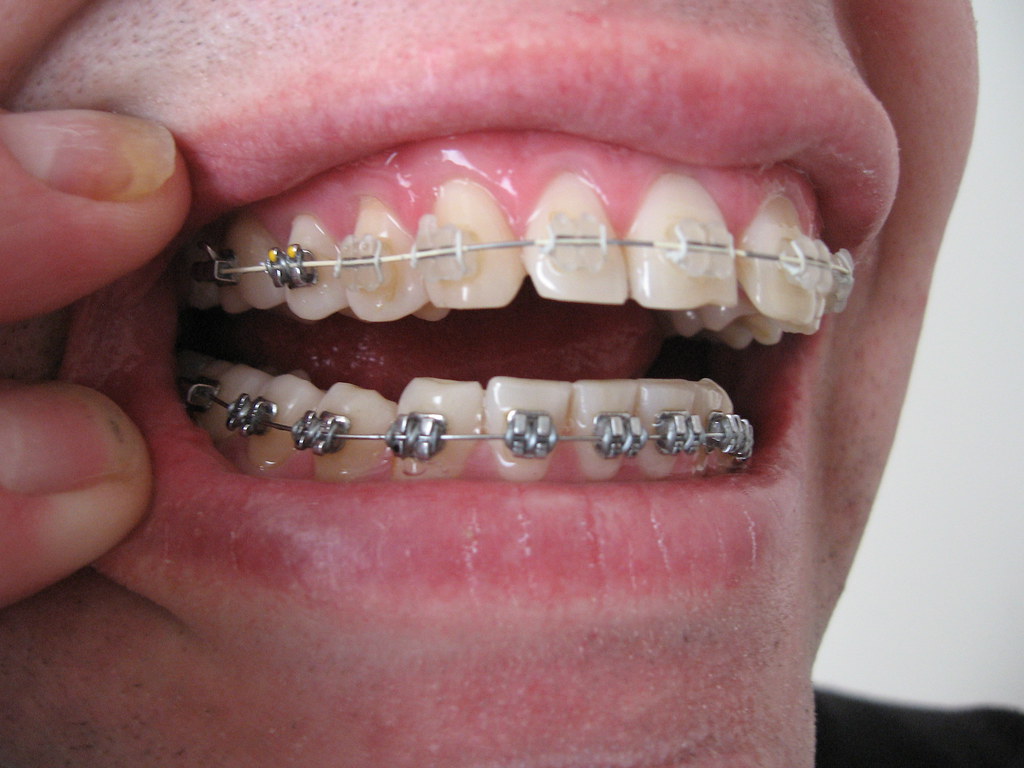 In medieval times, when people suffered from gaps in their teeth, overbites and other such dental problems, they usually had to just learn to live with them. Thanks to all the advances in modern dentistry and the technology that we have today, patients no longer have to live with smiles they aren’t comfortable with. Perhaps one of the most popular innovations to hit the dentistry industry is braces.
In medieval times, when people suffered from gaps in their teeth, overbites and other such dental problems, they usually had to just learn to live with them. Thanks to all the advances in modern dentistry and the technology that we have today, patients no longer have to live with smiles they aren’t comfortable with. Perhaps one of the most popular innovations to hit the dentistry industry is braces.
What are Braces?
Braces are essentially dental devices that are used to straighten misaligned and crooked teeth. They also help position teeth properly concerning how they clamp down when patients bite, and they not only lead to a more perfect smile, but they can also contribute to overall good dental health. There are various types of braces on the market nowadays, but traditionally, the type of braces that most people call to mind when they envision braces are metal fixtures affixed to the top of teeth and connected with metal wires that help gradually pull the teeth into their rightful positions within the mouth.
What Conditions Do Braces Address?
Braces are most commonly used to fix any misaligned or crooked teeth, but they can also be used to address underbites and overbites. When used to address underbites and overbites, sometimes the braces located on the top teeth are connected to those located on the bottom via a rubber band that wraps around the back upper and lower molars. These bands can help guide the jaw into the proper position to create the appropriate bite.
Types of Braces
 Of course, there are traditional metal braces that almost everyone is acquainted with, but modern innovations in dental science have also made it so that there are various other braces options available nowadays as well. For instance, for those people who want the same function of traditional metal braces but with a different look, there are colored braces that basically consist of the metal affixed to the tooth being colored rather than having the metal stainless steel appearance. There are also braces that allow these pieces to be clear so that all that is seen in the mouth is the wire going across the teeth, pulling them together. Then, there are completely invisible braces that are essentially custom-designed trays that patients place over their teeth and change out every two or three weeks, as instructed by their orthodontist, to gradually move their teeth into place. Invisible braces are fast becoming the most popular types of braces because with these clear aligner trays, nobody can even tell that people have braces in their mouths.
Of course, there are traditional metal braces that almost everyone is acquainted with, but modern innovations in dental science have also made it so that there are various other braces options available nowadays as well. For instance, for those people who want the same function of traditional metal braces but with a different look, there are colored braces that basically consist of the metal affixed to the tooth being colored rather than having the metal stainless steel appearance. There are also braces that allow these pieces to be clear so that all that is seen in the mouth is the wire going across the teeth, pulling them together. Then, there are completely invisible braces that are essentially custom-designed trays that patients place over their teeth and change out every two or three weeks, as instructed by their orthodontist, to gradually move their teeth into place. Invisible braces are fast becoming the most popular types of braces because with these clear aligner trays, nobody can even tell that people have braces in their mouths.
How Long Do I Have to Wear Braces?
The length of time that patients must wear braces varies from individual to individual. Whereas some patients only have to wear braces for six months to a year, other might have to wear them for four years or more. The extent of misalignment, overbite, underbite or other condition helps determine how long a patient will have to wear braces as well as the type of braces he or she will be treated with as well as the specific treatment method. However, even after braces are removed, most patients have to wear a retainer constantly for the first six months after having their braces removed and then while they sleep for many years to prevent their teeth from moving back into the wrong positions.
Are Braces Painful?
The amount of pain associated with braces varies from person to person. Whereas some people might be more susceptible to dental pain, others might now. Generally, any pain that is experienced occurs for a few days when the braces are tightened during monthly or bi-weekly orthodontic appointments, but over-the-counter pain medications like Motrin and Tylenol are usually sufficient to lessen any pain. People who experience extreme discomfort and pain with their braces should speak with their orthodontists, though, since there might be adjustments the practitioners can make to alleviate their pain and make the process more comfortable for them. Generally, though, the pain associated with braces is bearable for most patients.
References:
American Dental Association.” Braces.” Retrieved on November 17, 2015, from http://www.ada.org/~/media/ADA/Publications/Files/patient_74.ashx.
Kidshealth.org. “Braces.” Retrieved on November 17, 2015, from http://kidshealth.org/kid/feel_better/things/braces.html.
American Dental Association
211 East Chicago Ave.
Chicago, IL 60611-2678
312-440-2500
www.ada.org
Kidshealth.org
Nemours Foundation
10140 Centurion Pkwy N
Jacksonville, Florida 32256-0532
(904) 697-4100
www.kidshealth.org
Images:
https://farm5.staticflickr.com/4018/4373750483_ea9f7cc211_b.jpg